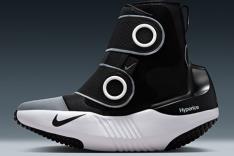To figure that out, we have to figure out how wheel revolutions correlate to what really matters—the number of times we have to turn the pedals. Let's say for a moment that we only have one gear on the bike—a 12-tooth cog in back and a 53-tooth chain ring in front.
More: An Introduction to Gear Ratios
For every revolution our wheels make, the cog also makes one full revolution. However, because the chain ring has 53 teeth, it only turns a fraction of a revolution. To be exact, it goes through 12 teeth (the same number as the rear cog), or 12 ? 53 = 0.23.
Roughly 1/4 of a turn. So, multiplying the number of revolutions for each wheel by 0.23, we get a close approximation of the number of pedal revolutions. That yields:
- 17,642 crank revolutions (700c)
- 19,099 crank revolutions (650c)
Keep in mind that a full revolution of the chain ring requires the cranks to go through one full turn, so each revolution requires you push with both legs. This means that both of your legs will have to mash the pedals 1,457 more times to get through 100 miles on 650c wheels. These wheels are awful!
More: Intro to Bike Gears
Ah, but we're not limited to just one gear. What if, knowing what we've found about 650c wheels, we adjusted our gear ratio accordingly? Using a 53:11 ratio, we would achieve the following:
11 ? 53 = 0.21
83,041 x 0.21 = 17,438 crank revolutions
What a difference one little tooth makes. We have suddenly evened the score for the shorter athlete. At least in terms of distance per revolution, that is. But of course, dropping a gear makes it harder to turn the cranks, so does it really even the score?
That's a discussion for another day. The combination of wheel size and gear ratios can be complicated, but it's interesting to see just how much of a difference two wheels can make.
More: What Are the Advantage of Compact Gearing?
 Search for your next triathlon.
Search for your next triathlon.
- 2
- of
- 2
About the Author









Discuss This Article